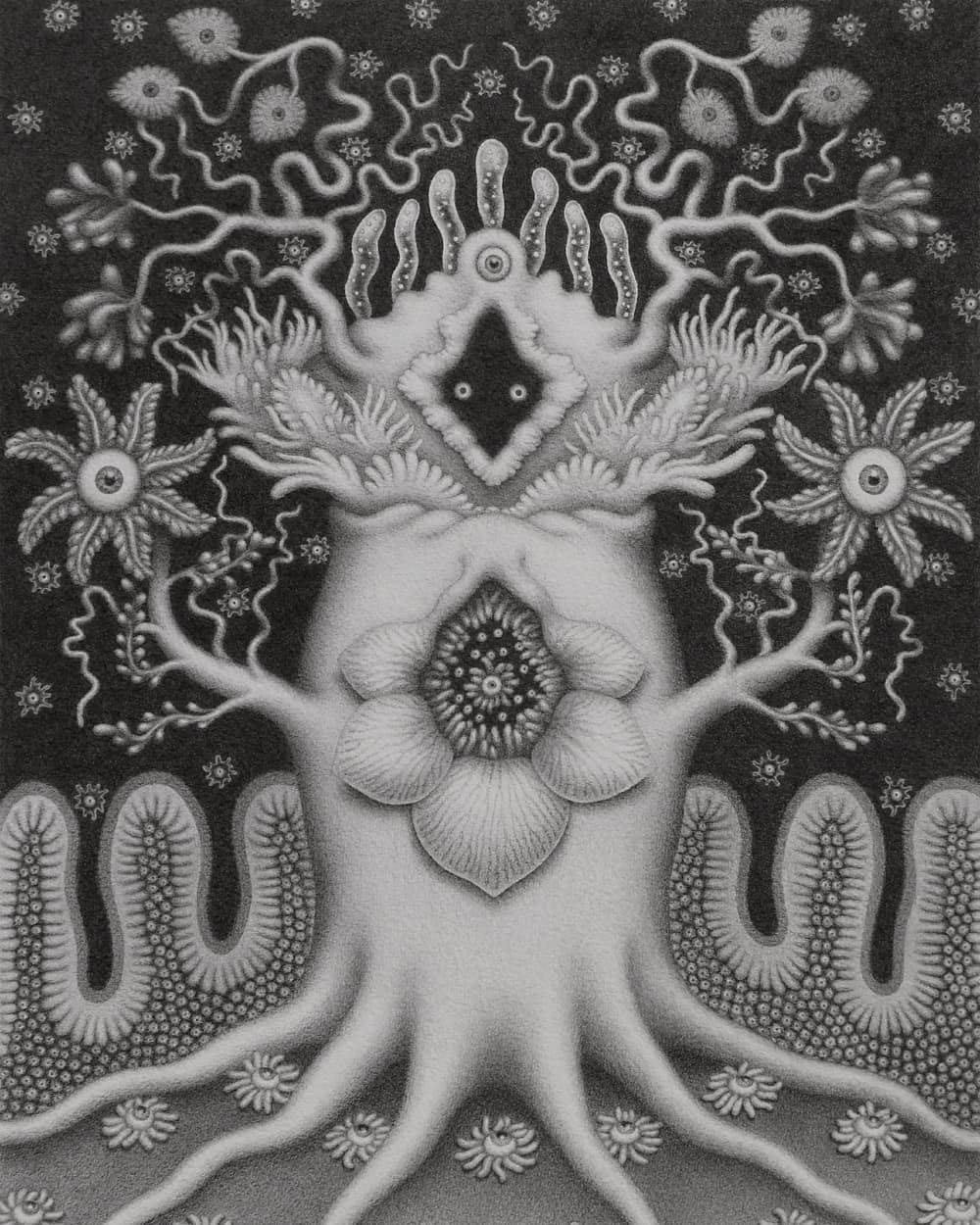Sea, Sihanoukville, Wrapped Future II Series
2018 - Photography (Photography)
104 x 156 cm
Lim Sokchanlina
The photographic series Wrapped Future II by Lim Sokchanlina brings fences used on construction sites to enclose the surrounding areas, to different locations, lakes, valleys and forests; and places them at the center of works to obscure the beautiful Cambodian landscape. The inharmonious landscape is gradually captivated by the exquisite balance between inorganic material and mystical background. The photos were taken in places that in recent years have become targets of large-scale exploitation under a massive globalization of capital and other political interests. Using the fences as a symbol of change, Sokchanlina’s work warns of an uncertain future where local realities with their communities, culture, and nature will slowly fade away. – Text by Sachiko Iwase
Lim Sokchanlina, nicknamed ‘Lina’, works across documentary and conceptual practices with photography, video, installation, and performance; particularly drawn to the use and function of space where urban communities meet rural attitudes. Using different strategies, he calls attention to various social, political, geopolitical, economic, cultural, and environmental changes in Cambodia, and in relation to the globe. Lim Sokchanlina also belongs to a Khmer generation critically aware of the need to inform Cambodian youth of their cultural, social, and political histories. His work raises questions about the role of power and economics in our everyday living and contemporary present and usually involves research to discover, unpack, and record the present’s history and the future’s imagination by learning from the past. Growing up in a society decimated by the affects of the Khmer Rouge and its anti-intellectualization, a violent civil war that killed millions, Lina co-founded Stiev Selapak / Art Rebels, in 2007 (an initiative which gave subsequent birth to exhibition space ‘Sa Sa Art Projects’ and commercial space ‘Sa Sa Bassac’) – a community within Southeast Asia well-known for their activities raising local awareness of civic, environmental and cultural injustice. – Text by Sa Sa Bassac and Zoe Butt
Colors:
Other related works, blended automatically
» see more

© » KADIST
Lim Sokchanlina
2017The photographic series Wrapped Future II by Lim Sokchanlina brings fences used on construction sites to enclose the surrounding areas, to different locations, lakes, valleys and forests; and places them at the center of works to obscure the beautiful Cambodian landscape...
Related works sharing similar palette
» see more

© » KADIST
Gan Chin Lee
2019In Studies of Chinese New Villages II Gan Chin Lee’s realism appears in the format of a fieldwork notebook; capturing present-day surroundings while unpacking their historical memory...
Other works by: » Lim Sokchanlina
» see more

© » KADIST
Lim Sokchanlina
2017The photographic series Wrapped Future II by Lim Sokchanlina brings fences used on construction sites to enclose the surrounding areas, to different locations, lakes, valleys and forests; and places them at the center of works to obscure the beautiful Cambodian landscape...

© » KADIST
Lim Sokchanlina
2018The photographic series Wrapped Future II by Lim Sokchanlina brings fences used on construction sites to enclose the surrounding areas, to different locations, lakes, valleys and forests; and places them at the center of works to obscure the beautiful Cambodian landscape...

© » KADIST
Lim Sokchanlina
2017The photographic series Wrapped Future II by Lim Sokchanlina brings fences used on construction sites to enclose the surrounding areas, to different locations, lakes, valleys and forests; and places them at the center of works to obscure the beautiful Cambodian landscape...

© » KADIST
Lim Sokchanlina
2018The photographic series Wrapped Future II by Lim Sokchanlina brings fences used on construction sites to enclose the surrounding areas, to different locations, lakes, valleys and forests; and places them at the center of works to obscure the beautiful Cambodian landscape...
Related works found in the same semantic group
» see more

© » KADIST
Diane Simpson
2012Simpson’s sculptural practice connects architecture, clothing, furniture and the body to explore the functional and sociological roles and the influence of the design and architecture of various cultures and periods in history...

© » KADIST
Koki Tanaka
2010Tanaka’s unique understanding of objects and materials is reflected in the four photographs that document his Process of Blowing Flour ...





